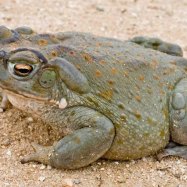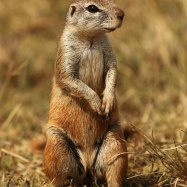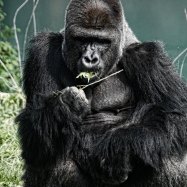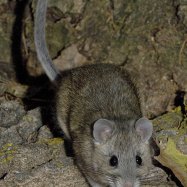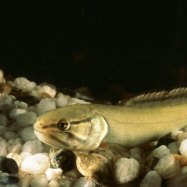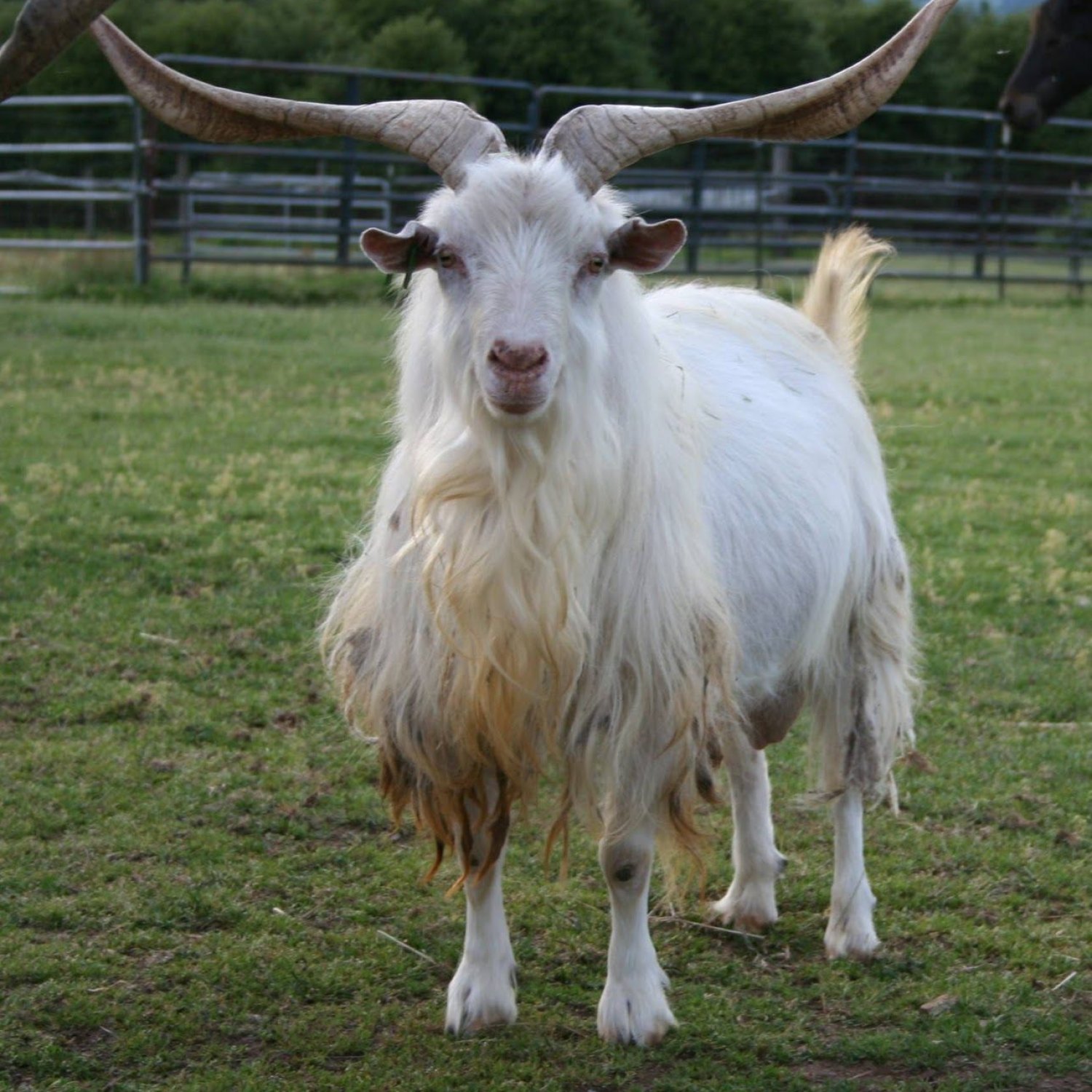
Cashmere Goat
Up to 1.2 meters (4 ft)
Discover the beauty and luxury of cashmere goats. These magnificent animals can reach up to 1.2 meters in length and are found worldwide. With their stocky and muscular body shape, they are part of the Bovidae family and are highly prized for their soft, fine wool. Explore the world of these fascinating creatures today! #CashmereGoat #AnimalFacts #Bovidae
Animal Details Summary:
Common Name: Cashmere Goat
Kingdom: Animalia
Habitat: Mountainous regions
The Majestic Cashmere Goat: A Unique and Adaptable Breed
Nestled in the breathtaking mountainous regions of Central and Southwest Asia, the Cashmere Goat, also known as Capra hircus, has captured the hearts and minds of people all over the world. With its stocky and muscular body, various colors, and remarkable ability to adapt to different environments, this species has become a symbol of strength and resilience.But what sets the Cashmere Goat apart from other goat breeds? Let's delve into its biology, habitat, and unique features to uncover the fascinating world of this majestic animal.
The Order of Artiodactyla: A Closer Look at Cashmere Goats
The Cashmere Goat belongs to the order of Artiodactyla, a diverse group of placental mammals that includes deer, antelopes, and cows Cashmere Goat. This order is characterized by their even-toed hooves and their ability to graze on vegetation.The goats within this order are known for their agility and sure-footedness, making them well-suited for their mountainous habitat. Unlike other mountain-dwelling animals, such as the Ibex, Cashmere Goats possess a stockier, more muscular body, allowing them to navigate rocky terrains with ease.
Unveiling the Habitat of Cashmere Goats
Cashmere Goats are true mountain dwellers, preferring to live in rugged and steep terrain where other animals struggle to survive. This preference for high-altitude environments can be traced back to their origins, as they were originally domesticated in mountainous regions of India, Afghanistan, Iran, and China.But unlike other species that are limited to a specific geographical distribution, Cashmere Goats have adapted to various environments and can now be found all over the world. From the rocky mountains of Europe to the deserts of North America, these adaptable creatures have thrived in diverse terrain.
Diet and Feeding Habits of Cashmere Goats
Like all goats, Cashmere Goats are herbivorous, meaning they feed primarily on plants and vegetation. In their natural habitat, these goats have a seemingly endless supply of food in the form of shrubs, grasses, and even trees Chinook.Their diet also plays a crucial role in the production of Cashmere wool, their most prized possession. This luxurious and highly-sought-after wool comes from the undercoat of the Cashmere Goat, and unlike the coarser outer coat, it provides insulation to help them survive in harsh winter climates.
A Closer Look at their Unique Features
The Cashmere Goat is known for its striking appearance, with a range of colors from white, black, brown, and grey. This variation in coloration is not only aesthetically pleasing but also serves a practical purpose in their natural habitat, allowing them to blend in with their surroundings and avoid predators.But it's not just their color that makes them unique. These goats also have an exceptional ability to adapt and keep warm in harsh winter climates. With a double coat of cashmere wool, they can survive in temperatures as low as -30°C (-22°F).
Their body shape also plays a crucial role in their survival. The stocky and muscular build of Cashmere Goats allows them to store fat reserves during the winter, providing them with the necessary energy to survive when food is scarce.
The Cashmere Goat's Popularity and Impact on Global Economies
The Cashmere Goat's luxurious wool has captured the attention of the fashion industry, making it one of the most valuable animal fibers in the world. With its softness, warmth, and durability, cashmere is highly sought after for creating high-end clothing items, such as sweaters, shawls, and even accessories like hats and gloves.This popularity has had a significant impact on the global economy, as cashmere production brings in billions of dollars each year. The countries where Cashmere Goats are most commonly found, such as Mongolia, China, and Iran, rely heavily on the cashmere industry for economic stability.
Threats and Conservation Efforts
Despite their adaptability, Cashmere Goats are facing several threats that put their survival at risk. Human activities, such as overgrazing, deforestation, and poaching, have reduced their natural habitat and food sources, leading to a decline in their population.Thankfully, conservation efforts are underway to protect these incredible animals. In Mongolia, the Snow Leopard Trust has implemented a community-based conservation program that encourages herders to use sustainable herding practices, reducing the negative impact on the goats' habitat.
In addition, there has been a rise in sustainable and ethical fashion, promoting the use of recycled and eco-friendly materials, including cashmere. This movement has prompted companies to source their cashmere from suppliers that practice sustainable farming and animal welfare, ensuring the long-term survival of Cashmere Goats in their natural habitat.
A Final Thought
The Cashmere Goat is a remarkable species that has captured our fascination with its striking appearance and unique adaptations. From its mountainous habitat to its coveted cashmere wool, this animal is a symbol of strength, resilience, and success in the face of adversity.As we continue to learn more about the Cashmere Goat, we are reminded of the importance of conservation and sustainable practices to preserve the beauty and diversity of our natural world. And with continued efforts and awareness, we can ensure the survival of this majestic animal for generations to come.

Cashmere Goat
Animal Details Cashmere Goat - Scientific Name: Capra hircus
- Category: Animals C
- Scientific Name: Capra hircus
- Common Name: Cashmere Goat
- Kingdom: Animalia
- Phylum: Chordata
- Class: Mammalia
- Order: Artiodactyla
- Family: Bovidae
- Habitat: Mountainous regions
- Feeding Method: Herbivorous
- Geographical Distribution: Central and Southwest Asia
- Country of Origin: India, Afghanistan, Iran, and China
- Location: Worldwide
- Animal Coloration: Various colors - white, black, brown, and grey
- Body Shape: Stocky and muscular
- Length: Up to 1.2 meters (4 ft)
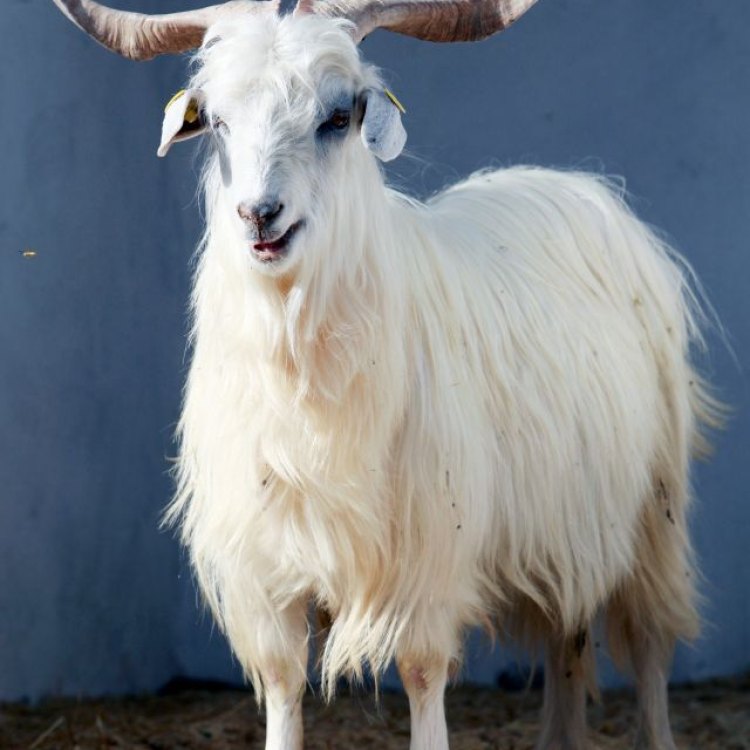
Cashmere Goat
- Adult Size: Medium-sized
- Average Lifespan: 10-15 years
- Reproduction: Sexual
- Reproductive Behavior: Breeding occurs in the fall
- Sound or Call: Males produce a call known as 'bleating'
- Migration Pattern: Non-migratory
- Social Groups: Herds
- Behavior: Social animals, peaceful and friendly temperament
- Threats: Predation, habitat loss, overgrazing
- Conservation Status: Not Threatened
- Impact on Ecosystem: Acts as a grazer and helps control vegetation growth
- Human Use: Fiber production (Cashmere wool), milk production
- Distinctive Features: Long and soft cashmere wool, large twisting horns (both males and females)
- Interesting Facts: Cashmere wool is highly valued for its softness and warmth
- Predator: Wolves, bears, and wild dogs
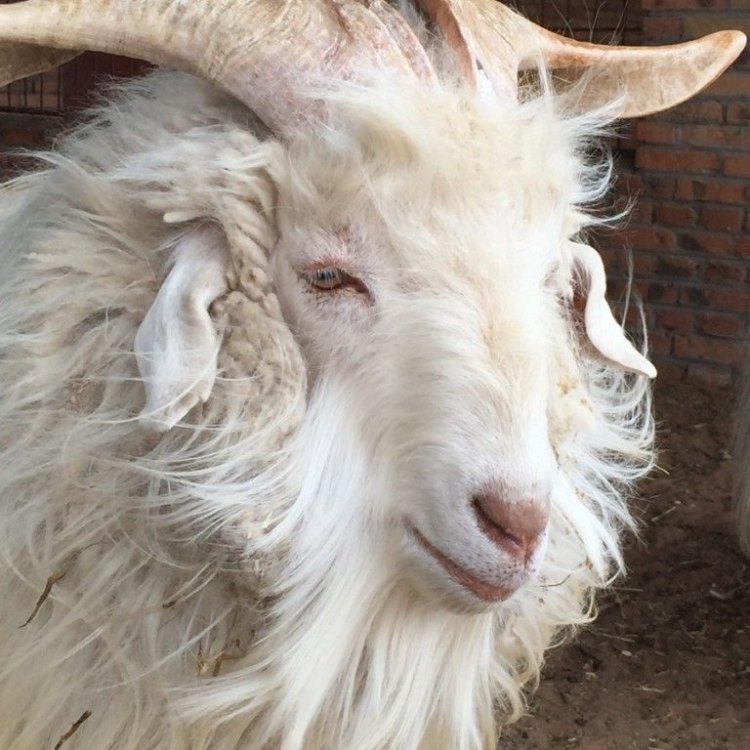
Capra hircus
The Majestic Cashmere Goat: A Unique and Valuable Creature
In a world where conservation and preservation of wildlife are becoming increasingly important, there is a creature that often goes unnoticed – the Cashmere Goat. These gentle, social animals may not be as well-known as their wild counterparts, but they hold an important place in our ecosystem and our lives. In this article, we will take a closer look at the unique features of the Cashmere Goat and discover why they are so valuable.A Medium-Sized Beauty
The Cashmere Goat belongs to the Capra hircus species, the same family as domestic goats PeaceOfAnimals.Com. They are medium-sized animals, with males typically weighing between 150-180 pounds and females between 100-130 pounds. They are also known for their distinctive appearance, with large twisting horns that both males and females possess.Cashmere Goats come in a variety of colors, including white, black, brown, and grey. Their soft, dense coats range from 2-6 inches in length and are highly valued for their cashmere wool.
Social Animals with a Friendly Temperament
One of the most fascinating aspects of Cashmere Goats is their behavior. These animals are highly social and form herds of around 20-30 individuals. They have a peaceful and friendly temperament, making them a joy to be around.Their social behavior also extends to their reproductive behavior, as breeding occurs in the fall and is a group activity. Males produce a unique call known as 'bleating', which is used to attract females during the breeding season Cactus Mouse. This harmonious behavior is essential for keeping the herd together and ensuring their survival.
Threats and Conservation Status
Like many other species, Cashmere Goats face threats to their survival. Predation, habitat loss, and overgrazing by domesticated goats are the most significant threats they face. Predators such as wolves, bears, and wild dogs pose a significant risk to these gentle herbivores, and their habitats are continuously being encroached upon by human activities.Despite these threats, the International Union for Conservation of Nature (IUCN) listed the Cashmere Goat as "Not Threatened" on its Red List. This status is a testament to the resilience of these animals and the efforts of conservationists to protect them.
The Valuable Role of Cashmere Goats in Ecosystems
While Cashmere Goats may not be the first species that come to mind when we think about their importance in the ecosystem, they play a crucial role. As herbivores, they primarily feed on grasses and shrubs, acting as grazers and contributing to the control of vegetation growth.Their grazing behavior helps maintain a balance in the ecosystem, preventing any particular plant species from dominating and preserving the diversity of the vegetation. In addition, their manure also acts as a natural fertilizer, enriching the soil and promoting plant growth.
Human Use and the Cashmere Industry
Humans have been living alongside Cashmere Goats for centuries and have found various uses for these animals. The most well-known use is for their cashmere wool, which is highly valued for its softness, warmth, and luxurious feel. Their wool is one of the finest and most sought-after materials, making it a significant contributor to the fashion industry.In addition to their wool, Cashmere Goats also provide milk, which is rich in nutrients and used for cheese and other dairy products. Some communities also use their meat for consumption, but this is not as widespread as their other uses.
Interesting Facts About Cashmere Goats
Aside from the valuable contributions they make to the ecosystem and to humans, Cashmere Goats also have some interesting facts that make them stand out from other domesticated animals.Did you know that their cashmere wool is eight times warmer than sheep's wool? This is because their coats have a unique inner layer of extremely soft and fine hair that helps them withstand harsh mountain climates.
Another interesting fact is that they are non-migratory animals, meaning they do not make seasonal journeys like other species do. They are content living in the same area as long as their food and water sources are plentiful.
In Conclusion
The Cashmere Goat may not be as well-known as other species, but its unique features and valuable contributions to our ecosystem cannot be ignored. These gentle, social animals play an essential role in balancing our environment, while also providing humans with luxurious cashmere wool and other resources.At the same time, it is crucial for us to recognize the threats these animals face and take steps to protect them. By preserving the habitat and promoting sustainable practices in the cashmere industry, we can ensure that these majestic creatures continue to thrive for generations to come. So, the next time you see a Cashmere Goat, remember to appreciate its beauty and the valuable role it plays in our world.
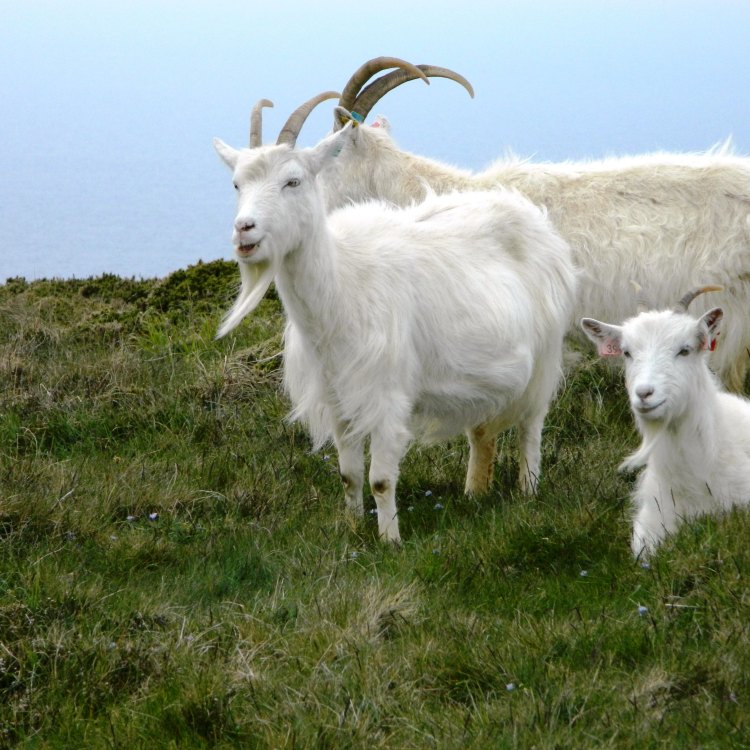
The Majestic Cashmere Goat: A Unique and Adaptable Breed
Disclaimer: The content provided is for informational purposes only. We cannot guarantee the accuracy of the information on this page 100%. All information provided here may change without prior notice.


